Sports Equipment & Uniform Storage
The leading supplier of storage solutions in any industry providing shelving, lockers, casework & everything in between.
Sports Equipment & Uniform Storage Solutions.
Universities around the country typically have at least eight different sports that are offered to men and women. It may not seem obvious at first, but what goes on behind the scenes of the final play, the match point, the last-minute goal, or the winning touchdown, is just as amazing as the end result.
With all of these sports come a lot of stuff—equipment, gear, uniforms, and so much more—and how they are stored and organized has everything to do with the success of a team. Our work with the University of Notre Dame’s football team is a great example of how smart storage can make a tremendous difference in your sports equipment storage room. Take a look at the Notre Dame case study below or contact us today for a complimentary quote.
Connect with Bradford Systems
Fill in below form as complete as possible and one of our representative will be in touch with you shortly
Game & Practice Gear Storage
From the equipment room to locker rooms & uniform storage, every professional sports team requires athletic storage systems that help them stay organized and secure. See how our versatile product lineup supports teams in streamlining their workflows and improving the organization of their training equipment, practice gear, uniforms, and more.
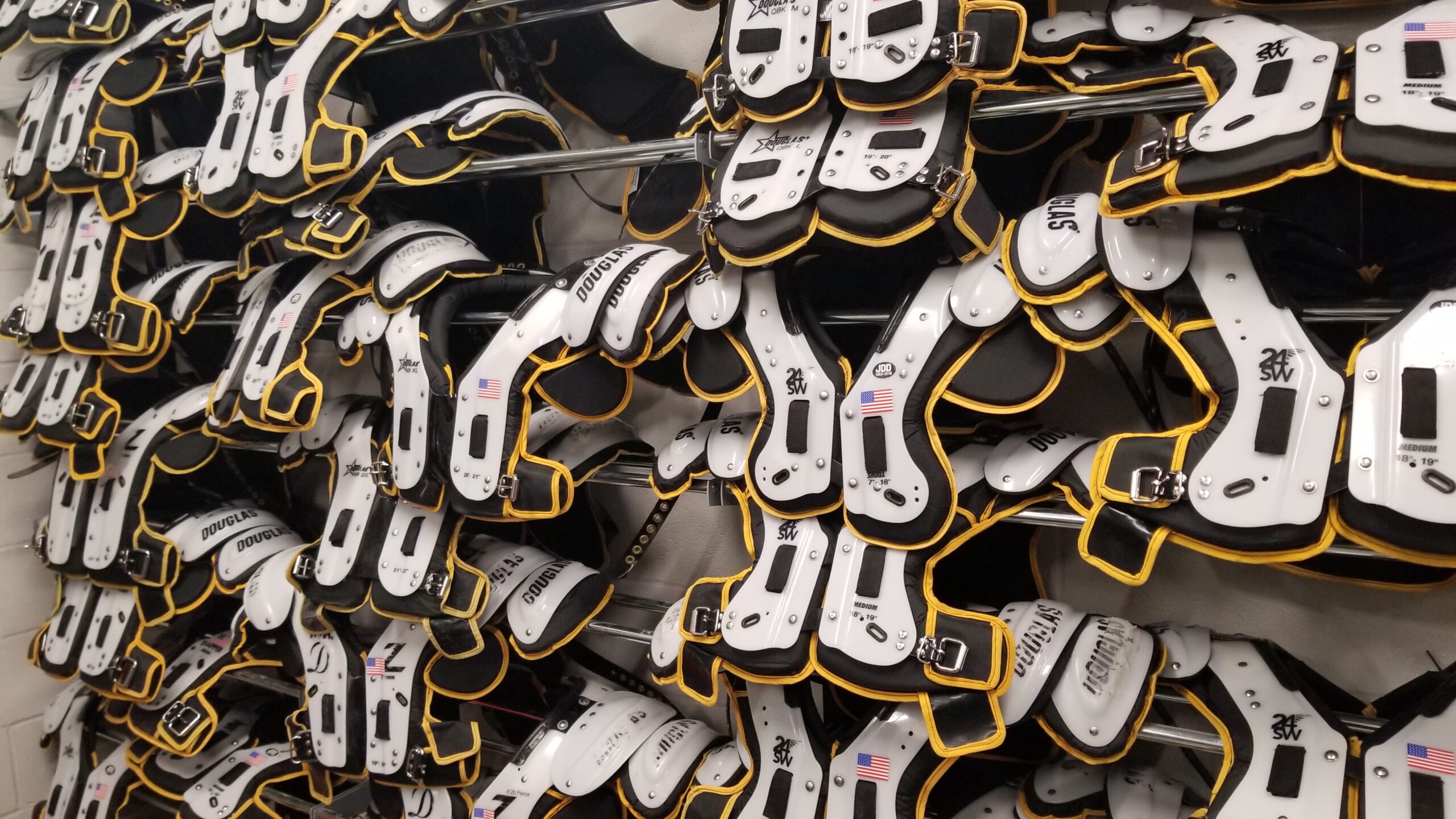
Shoulder Pads
To promote the proper storage of shoulder pads, cantilever racks were installed in the mobile system, permitting the pads to overhang at the front and rear. This application allowed full air circulation in contrast to the traditional cubby-shelf for each pad, prolonging the life of the equipment.
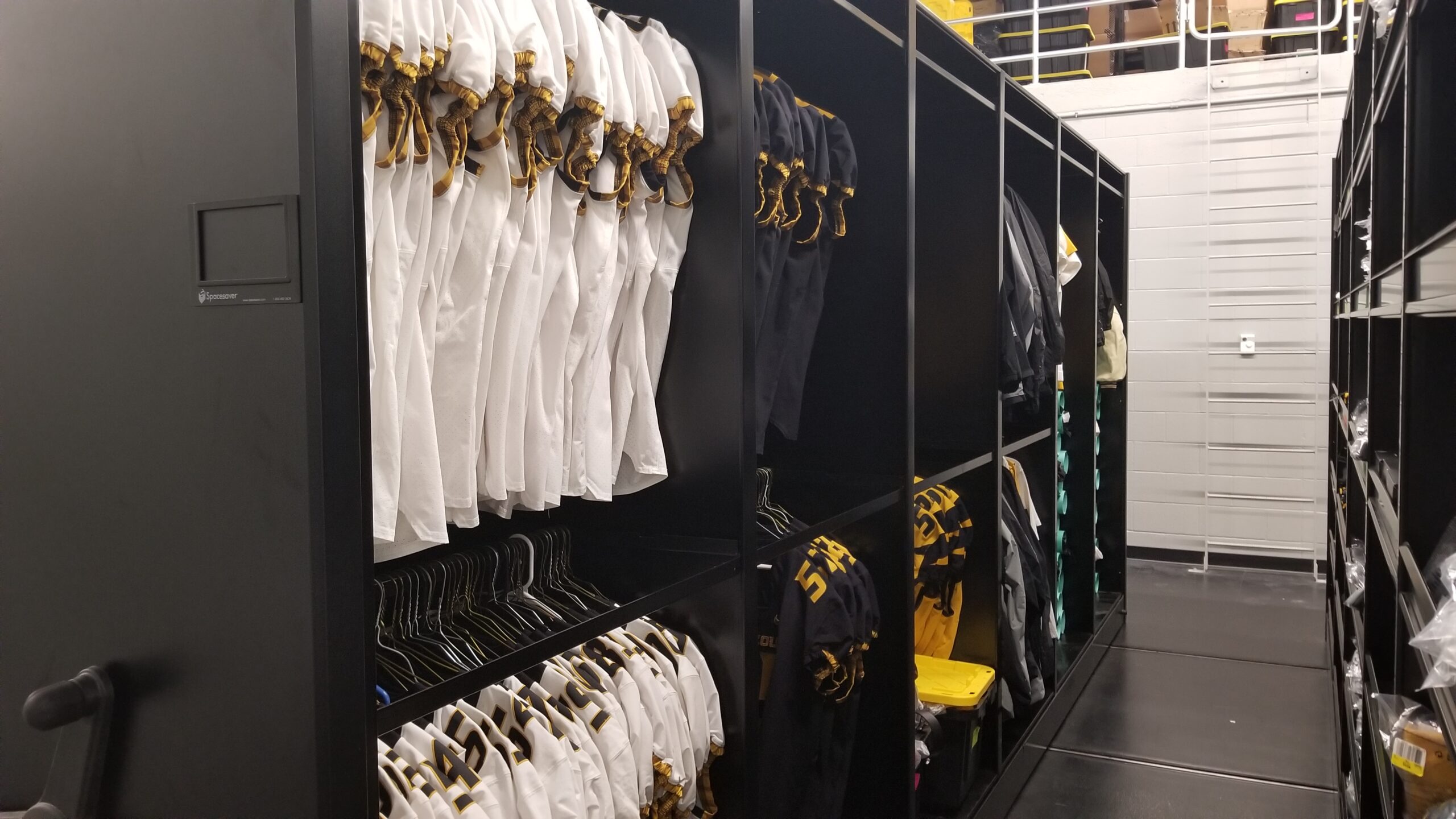
Jerseys
Using 4-post shelving and metal hanging rods, we turned a portion of the compact mobile system into a walk-in closet—doubling the amount of jerseys that could be stored in the unit.
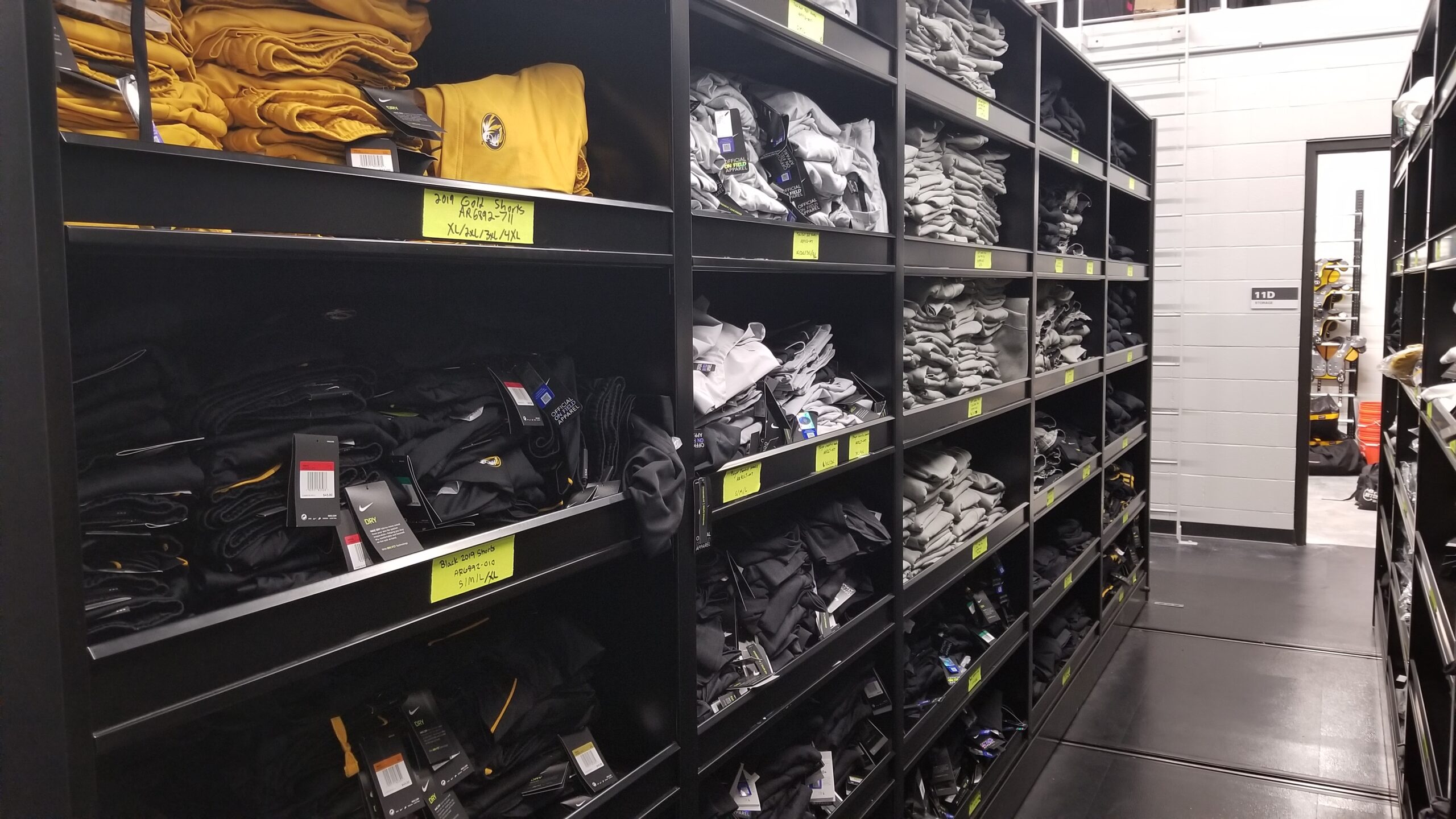
Other Clothing & Accessories
Smaller equipment items such as socks and gloves required an efficient method for keeping track of everything, so we again utilized 4-post shelving to create large cubby type sections to divide the items. We also integrated clear bars at the opening of the cubbies to prevent items from falling.
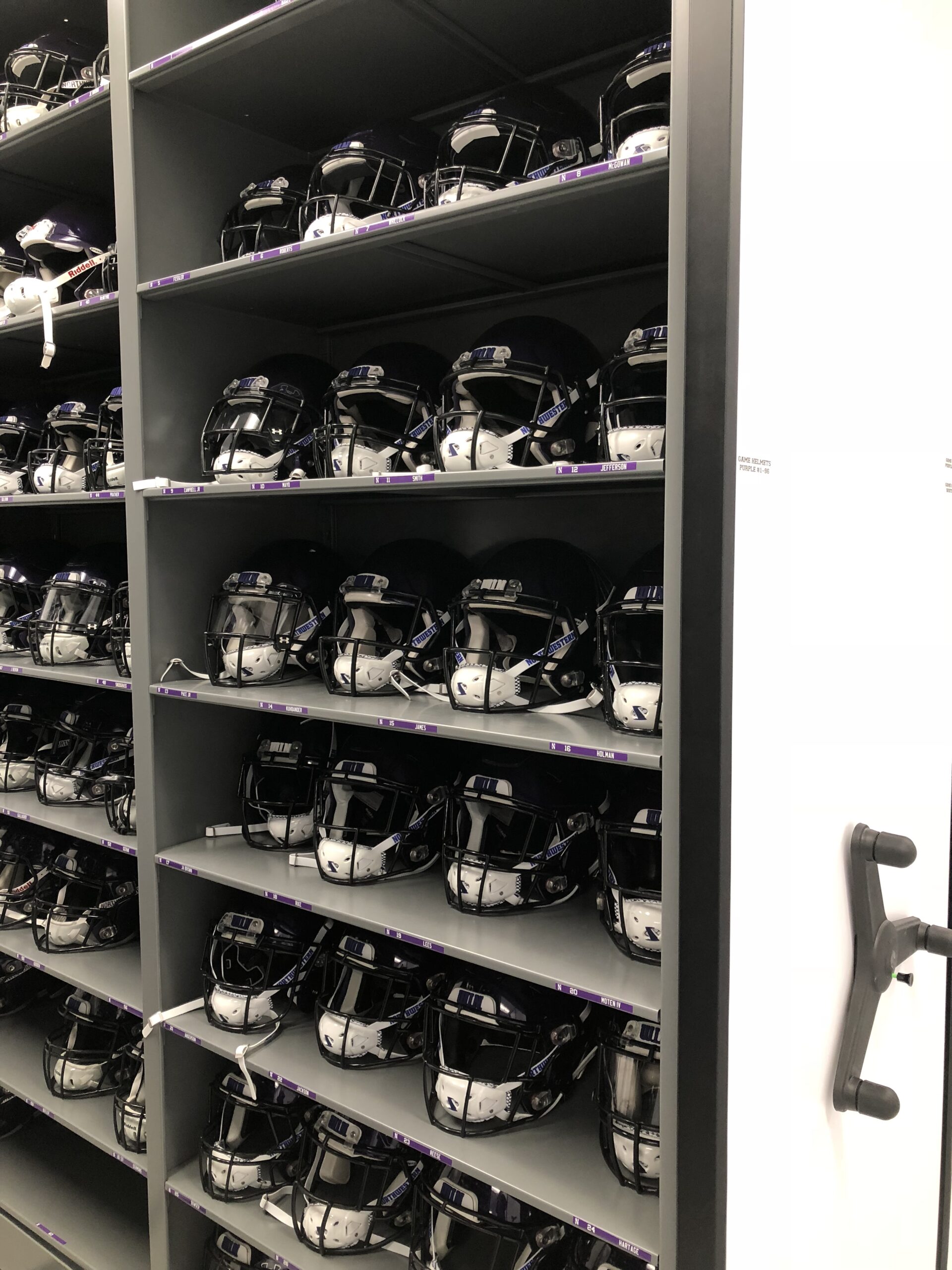
Helmet Storage
The third mobile system was installed in a separate room and was used solely for helmet storage. The 4-post shelving was customized similar to the player cubbies, although on a small, helmet-sized scale.

Shoulder Pads
To promote the proper storage of shoulder pads, cantilever racks were installed in the mobile system, permitting the pads to overhang at the front and rear. This application allowed full air circulation in contrast to the traditional cubby-shelf for each pad, prolonging the life of the equipment.

Jerseys
Using 4-post shelving and metal hanging rods, we turned a portion of the compact mobile system into a walk-in closet—doubling the amount of jerseys that could be stored in the unit.

Other Clothing & Accessories
Smaller equipment items such as socks and gloves required an efficient method for keeping track of everything, so we again utilized 4-post shelving to create large cubby type sections to divide the items. We also integrated clear bars at the opening of the cubbies to prevent items from falling.

Helmet Storage
The third mobile system was installed in a separate room and was used solely for helmet storage. The 4-post shelving was customized similar to the player cubbies, although on a small, helmet-sized scale.
Workspace Area
Notre Dame has 25 student equipment managers who fold many clothing items. With a team of 80-100 players and a minimum of four jerseys, 2 pairs of pants, 4 practice shirts, there’s always folding to do—and with no space, this daily task became difficult and cumbersome.
To create a workspace without losing storage capacity, we designed a fourth and final compact mobile shelving unit to be at a height similar to a counter. With this modification, 15 students can be folding at the same time. This three-carriage, mechanical-assist system was outfitted with 4-post shelving, doors, and drawers to store small items, parts, and conceal the room’s trash bins. Notre Dame’s equipment staff knew that their student equipment managers were crucial to the team’s success, and wanted them to have a place to keep their personal items as well. For this reason, banks of personal storage lockers were installed independent of the student athlete lockers.
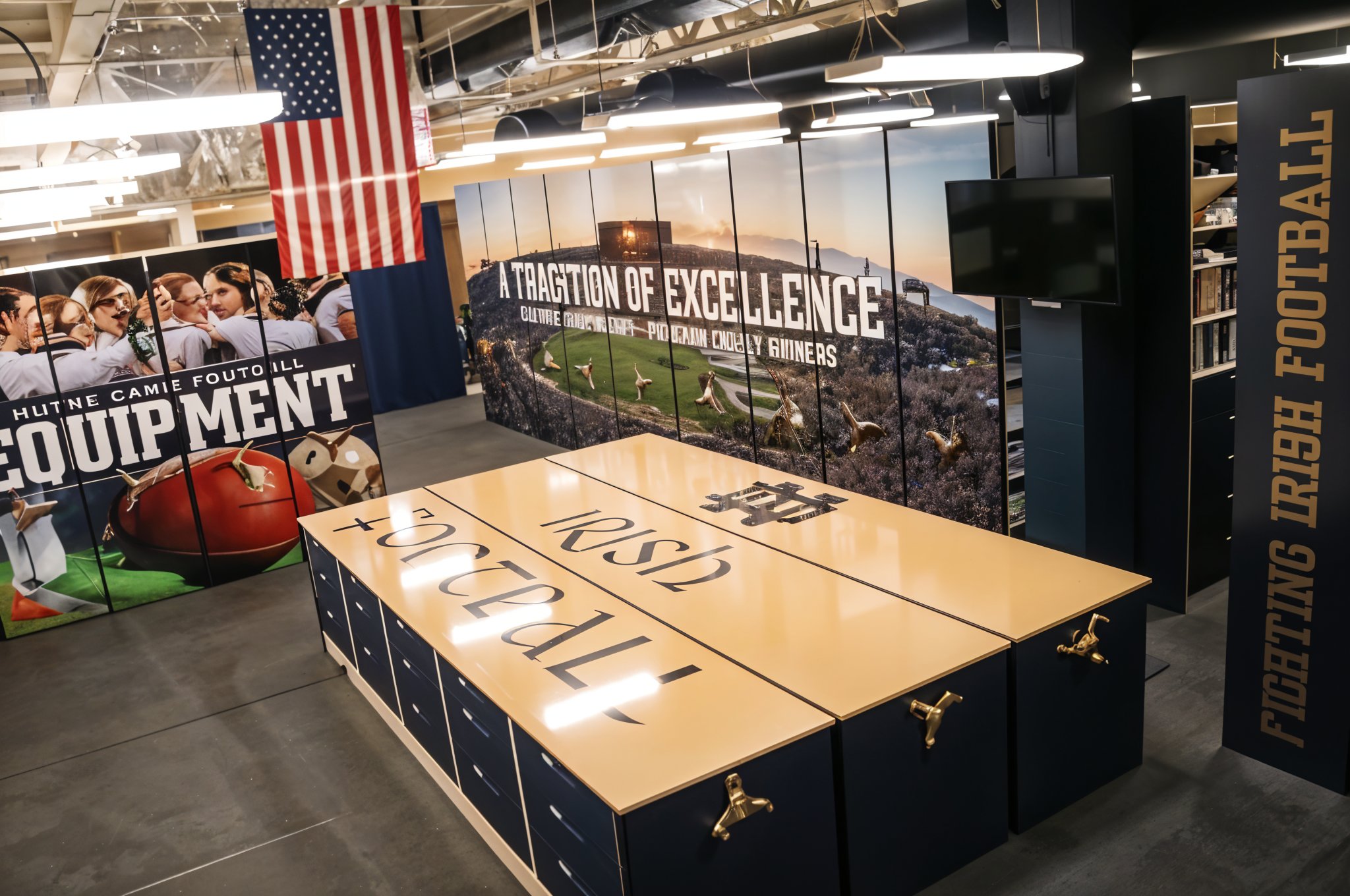
The Fighting Irish Battle with Equipment Storage
The University of Notre Dame, located in South Bend, Indiana, is recognized globally for its reputation as a research university and its top-rate School of Architecture. It’s also known for its football team—the Fighting Irish holds the highest winning percentage among college football programs and has 11 Division I NCAA National Championships.
However, there was one crucial element slowing the team down—less than ideal sports equipment storage. The football team’s equipment was being stored in a small room with static wooden shelving and concrete floors. The aisles between the static shelving were wide, designed to accommodate a skid and a pallet, which took up most of the floor space. There was so much wasted space—resulting in an equipment storage area that was not very functional.
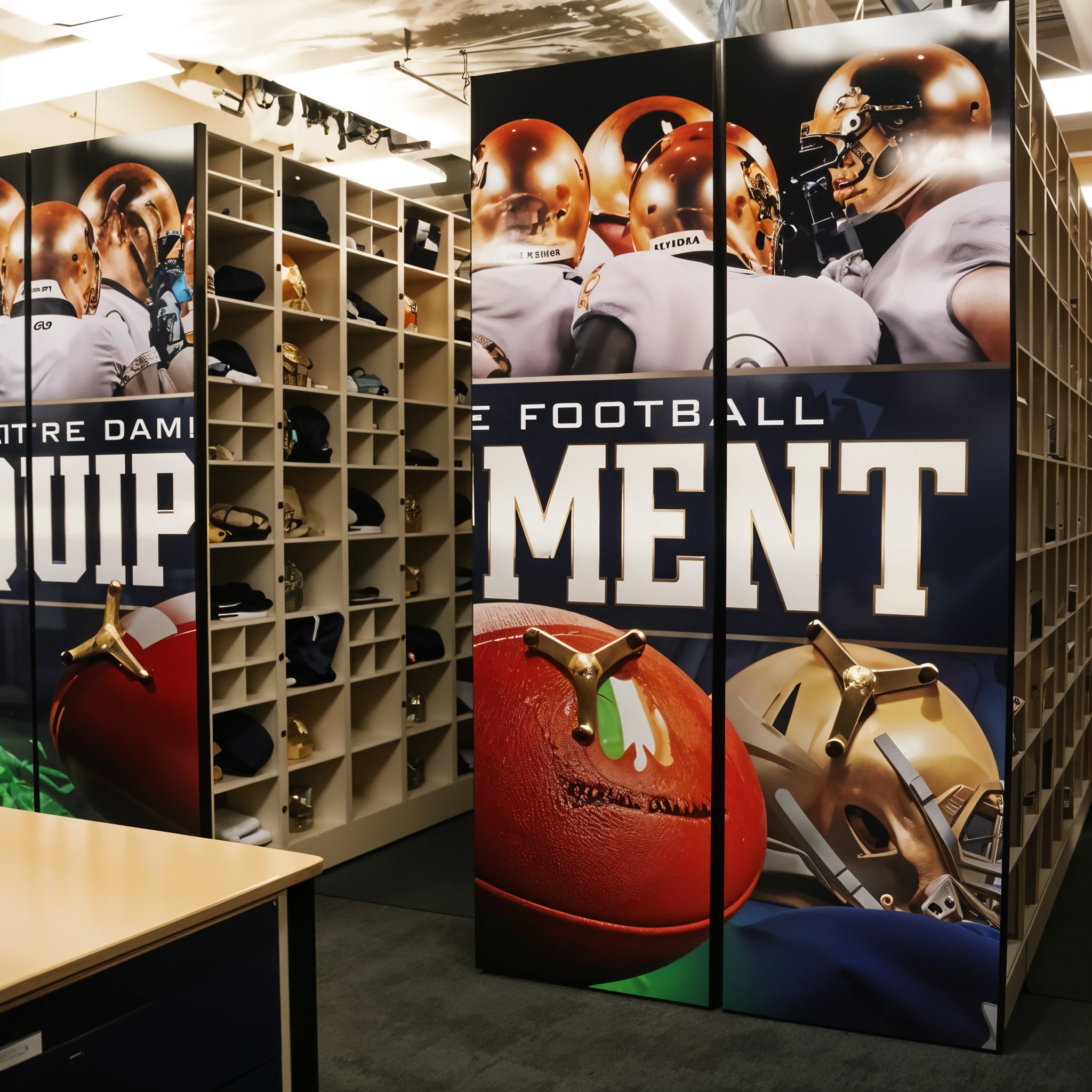
Sports Equipment Storage Solved and Personalized
Our solutions go beyond athletic equipment rooms, providing compact and secure storage for merchandise, maintenance, confidential files, and team memorabilia. Our expert consultants work with the equipment managers for professional sports teams to design the best athletic equipment solutions on the market today. By utilizing versatile storage options like Spacesaver’s High-Density Mobile Storage Systems, teams can streamline processes and keep gear better organized and protected.
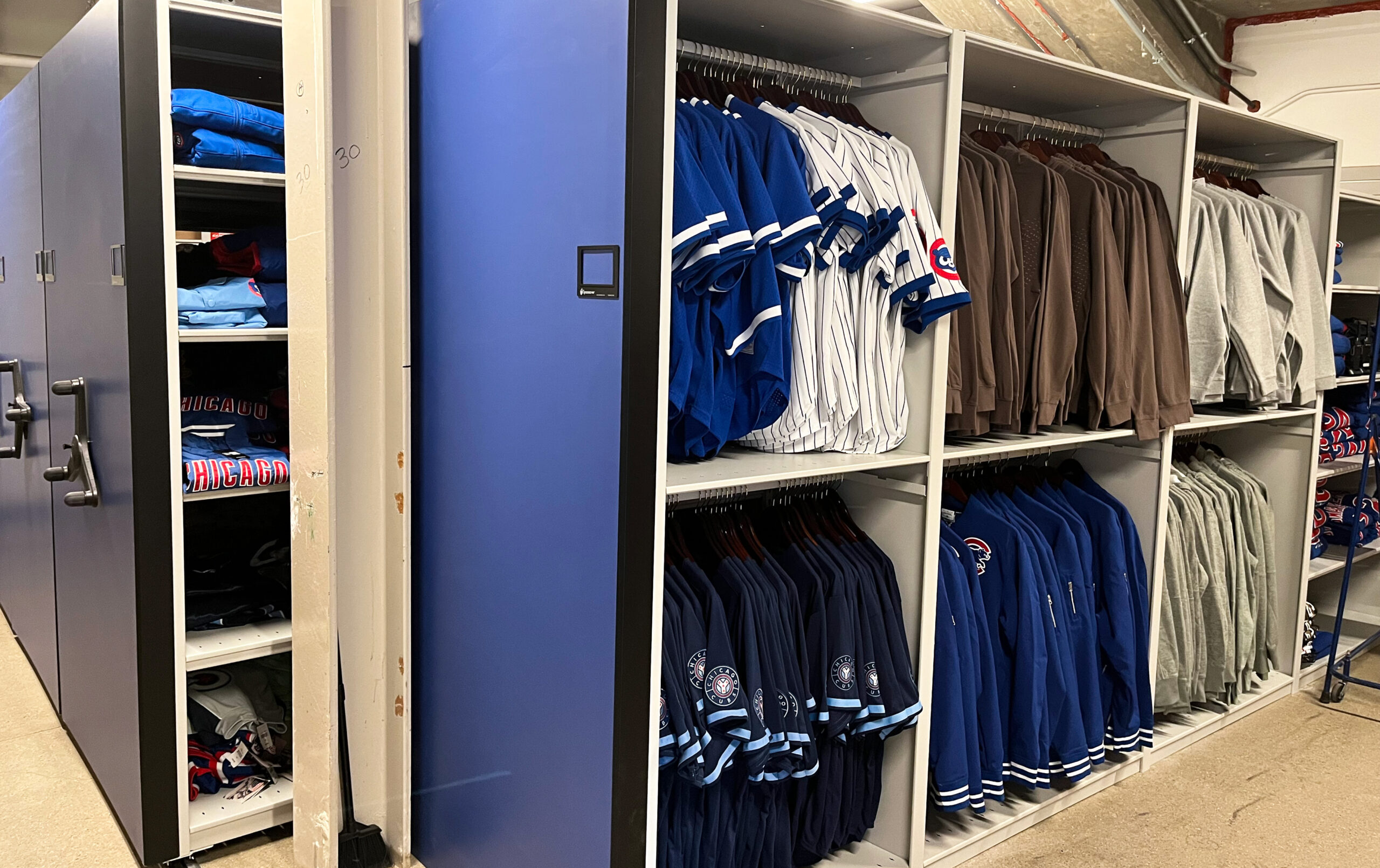
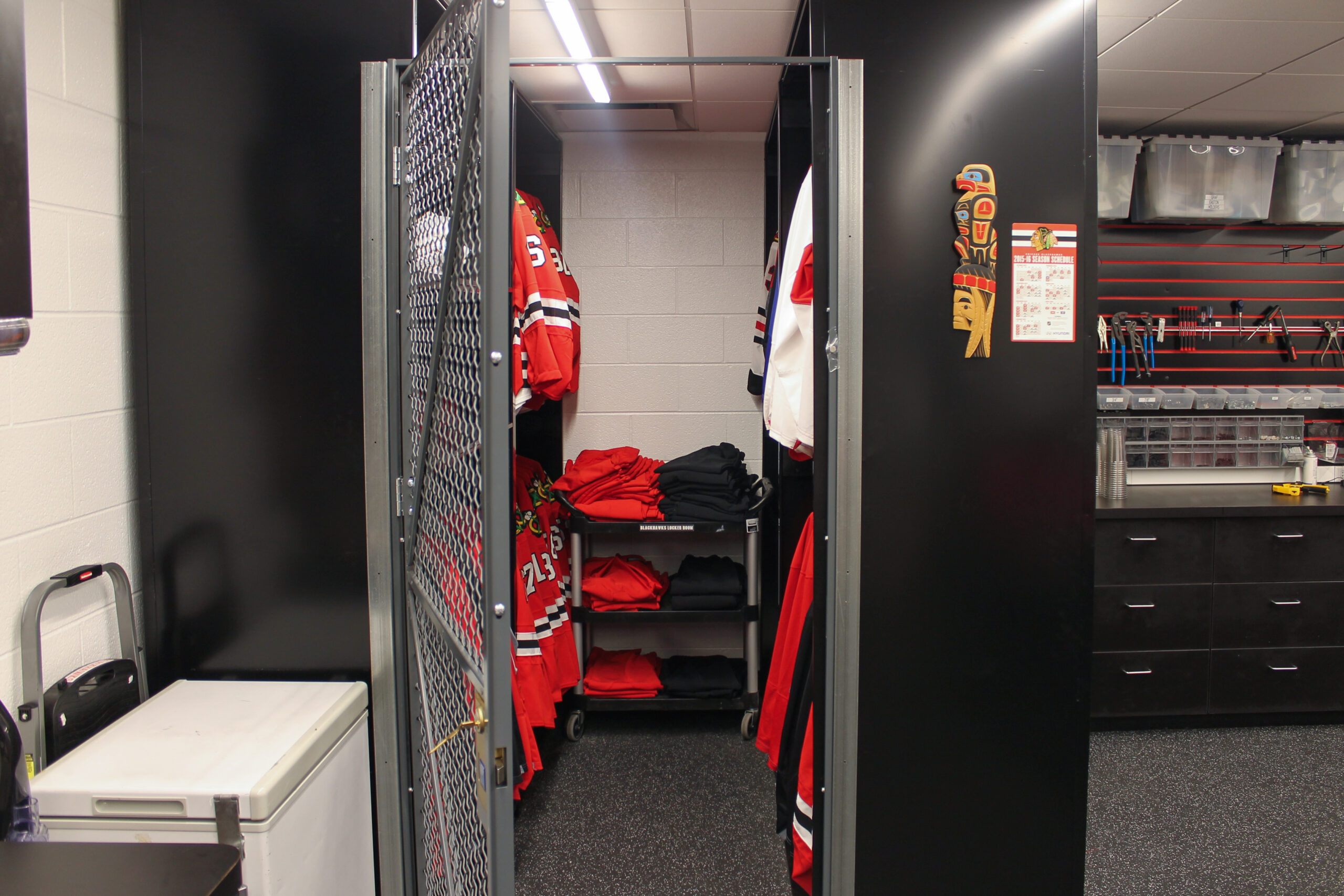
Frequently Asked Questions
Our storage systems, including lockers and shelving units, help organize sports equipment and uniforms, enhancing the efficiency of athletic facilities.
Yes, we provide customizable lockers that can be tailored to meet the specific needs and branding of athletic teams.
Absolutely. Our storage solutions are designed to store a wide range of sports equipment, from balls and bats to protective gear.
Yes, our storage systems are versatile and can be adapted for use in various athletic environments, including indoor gyms and outdoor fields.
We offer specialized storage options for training rooms, including shelving and cabinets for organizing medical supplies and equipment.
Our customizable storage systems can be designed to incorporate team colors and logos, enhancing team identity and pride.
Yes, our modular storage solutions can be tailored to fit within existing spaces, maximizing storage capacity without extensive renovations.








